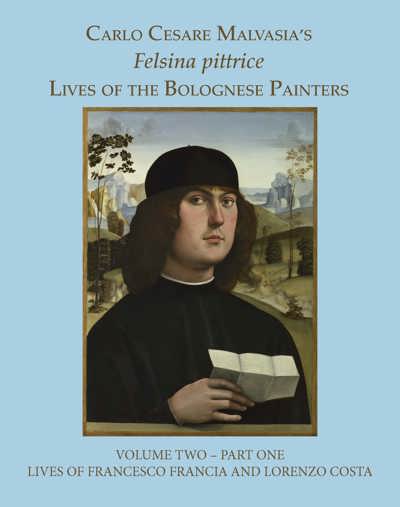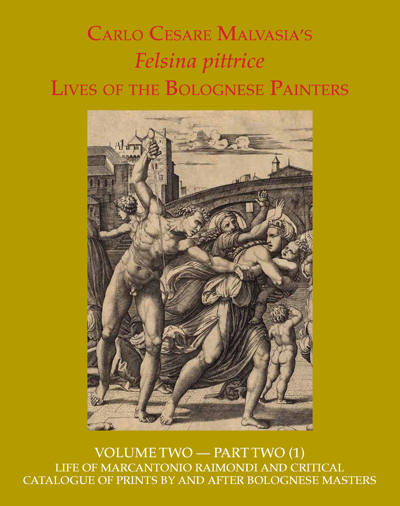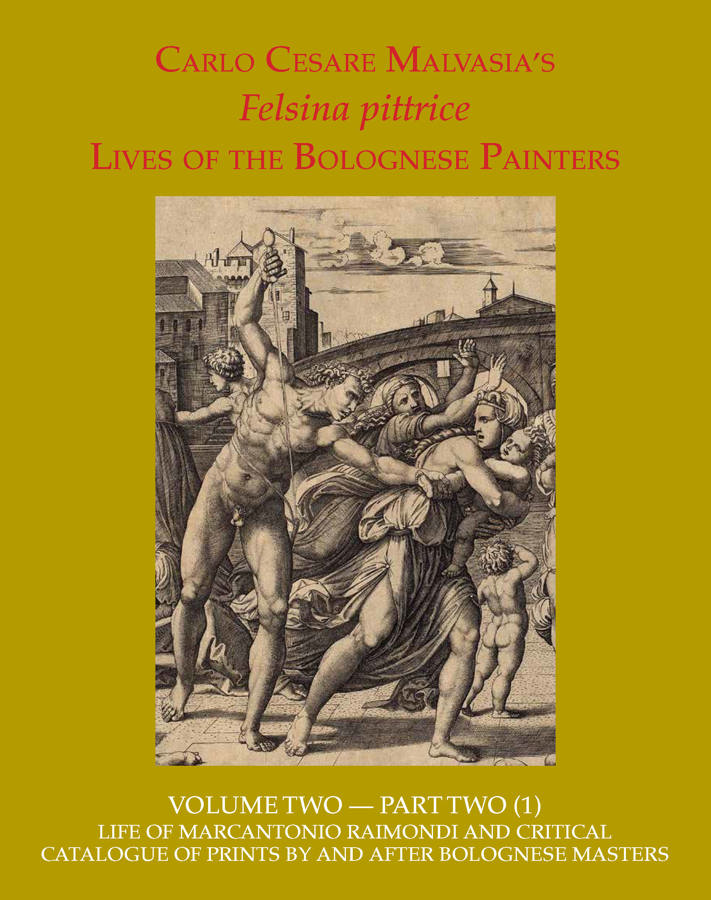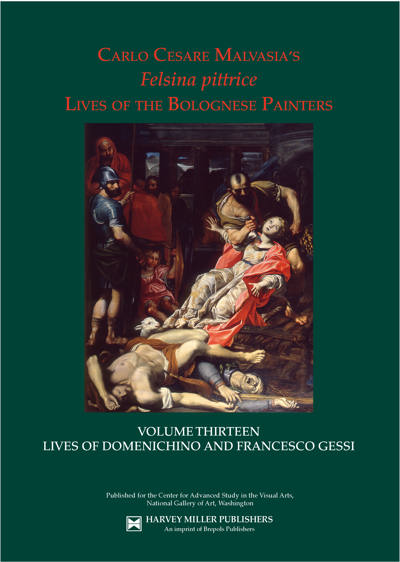
Carlo Cesare Malvasia
Felsina Pittrice: Life of Marcantonio Raimondi and Critical Catalogue of Prints by or after Bolognese Masters
Elizabeth Cropper, Lorenzo Pericolo
- Pages:2 vols, 844 p.
- Size:220 x 280 mm
- Illustrations:33 b/w, 877 col.
- Language(s):English, Italian
- Publication Year:2017
- € 300,00 EXCL. VAT RETAIL PRICE
- ISBN: 978-1-909400-66-5
- Hardback
- Available
"Overall, the volume is an excellent critical edition, based on accurate philological criteria, and should be considered a milestone for non-Italian speakers who wish to familiarize themselves with Felsina pittrice, a truly essential seventeenth-century text in the Italian and European scenario that provides a wealth of historiographical information and reflections useful for the development of multiple avenues of research." (Marzia Faietti, in: Print Quarterly, XXXV, 2018, 4, p. 469-470)
“Takahatake’s book is a valuable addition to the literature and all students of Marcantonio
will need it” (Paul Joannides, The Art Newspaper, 331, 2021, p. 51)
Malvasia’s life of Marcantonio Raimondi includes Malvasia’s critical catalogue of prints by or after Bolognese artists, from Giulio Bonasone to Giovan Battista Pasqualini. A great connoisseur and avid collector of prints, Malvasia recognizes the intelligence and novelty inherent in Giorgio Vasari’s life of Marcantonio with its list of prints produced by the Bolognese engraver. In republishing Vasari’s life, Malvasia not only adds valuable new information, but also completes Vasari’s list by cataloguing all the prints unnoticed by his Florentine predecessor. Aware of the interest of amateurs and collectors in identifying old and new prints, establishing their states, and building up an exhaustive collection, Malvasia undertakes the groundbreaking task of describing, one by one or by coherent series, the whole corpus of prints executed by or after Bolognese masters as far as he could determine. He describes the subjects of these works accurately, transcribes their inscriptions, specifies their techniques (whether engraving, etching, or woodcut), supplying their measurements in Bolognese once. In listing the works of Bonasone, the Carracci, Giovan Luigi Valesio, Guido Reni, and Simone Cantarini, among others, Malvasia often comments on their technical and aesthetic qualities, resorting to a refined and complex terminology that reveals his profound knowledge of printmaking. In her introductory essay, Naoko Takahatake explains the historical significance of Malvasia’s innovative production of the first extensive print catalogue, shedding new light on the unique context of Bolognese printmaking in the sixteenth and seventeenth centuries. In her notes, Takahatake identifies over eight hundred prints mentioned by Malvasia, almost all of which are reproduced in color in a separate volume. Underscoring the importance of Malvasia’s critical catalogue for amateurs and collectors, Carlo Alberto Girotto offers a critical edition of the annotations made by the French art theorist Roger de Piles to his own copy of the Felsina pittrice (now in the library of the Institut National d’Histoire de l’Art, Paris). At the end of the translation and notes, Lorenzo Pericolo publishes the sections of Malvasia’s Scritti originali (Ms. B16, Biblioteca Comunale dell’Archiginnasio, Bologna) relating to Bonasone.





